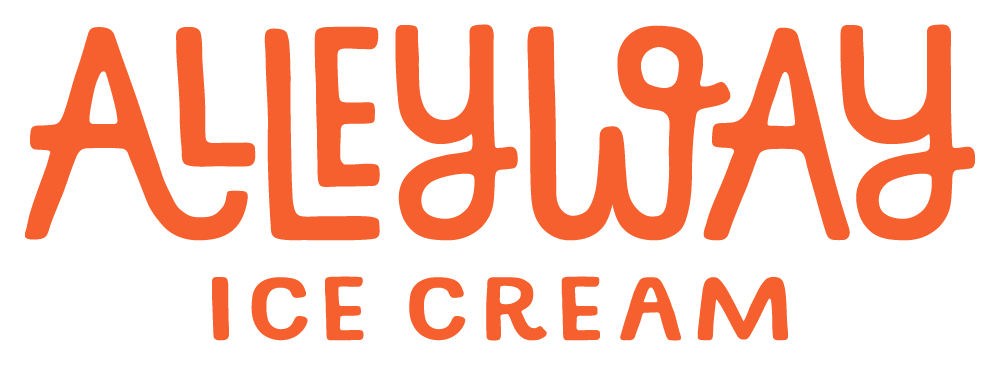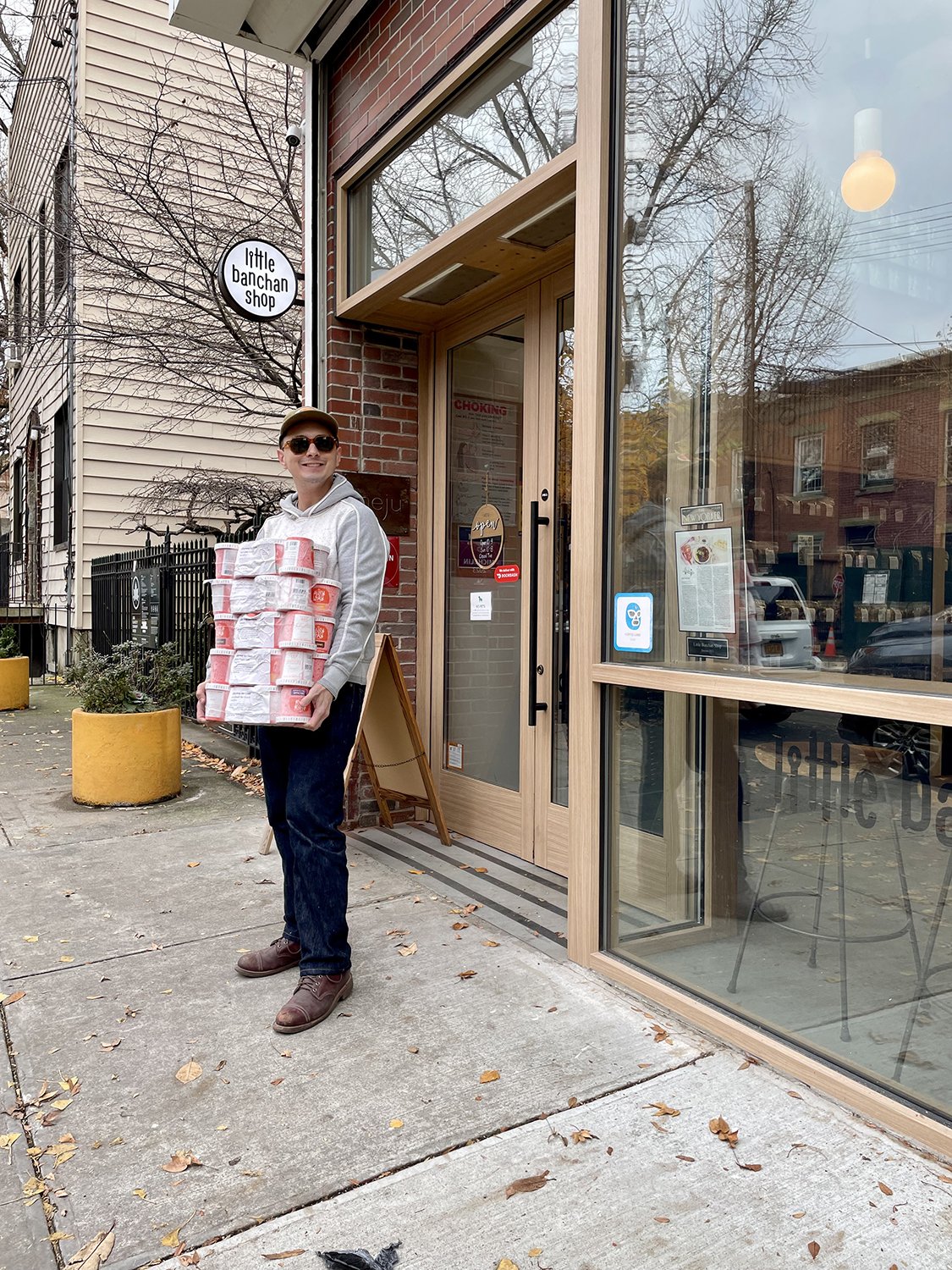Pints Finally Make it to NYC at Little Banchan Shop
You've been asking for years when we're going to sell pints in New York City? We're sorry it took so long, but as of Monday, the answer is, "We already do!"
Hop over to Little Banchan Shop in Long Island City where you'll find a variety of banchan, soups, stews, sauces, ready-to-cook meats, and now Alleyway. Oh and you also might see the entrance a hidden, secret Michelin Star restaurant (seriously!)
Pints are selling fast, so make sure you go before they run out.
What Do YOU Put on Ice Cream? 10 Countries Respond
Have you seen this Beryl video? In it, she delves into the diverse world of ice cream toppings, highlighting how each country's unique flavors and combinations reflect their cultural heritage.
Beryl's videos are always a delightful mix of fun and learning, introducing us to global culinary treasures.
Out of all these toppings, which one would be your top pick? Write a comment. Let us know.
World's First Plastic Ice Cream
The ice cream is actually an art installation, called ‘Guilty Flavours’ by Eleanora Ortolani, 27, intended to challenge the way we think about plastic waste and what we are - and are not - prepared to eat.
Are you ready to eat ice cream made from plastic waste? Leave a comment and let us know.
Alleyway at Adams, MyTown Marketplace & More
Calcutta Kitchens in Kingston
Julian here. THANK YOU from the bottom of my heart. Your unwavering support is truly unbelievable. Each day, I pour my heart and soul into bringing Alleyway Ice Cream closer to you.
I'm excited to share some wonderful news since our last newsletter. Alleyway Ice Cream is in four new locations, and I'm thrilled to announce that we’ve made our debut in local grocery stores for the first time ever! The new places you can now find our pints are:
Adams in Lake Latrine
MyTown Marketplace in Stone Ridge
Calcutta Kitchens in Kingston
Ruby Hill Farm in Clinton Corners
Alleyway needs your support to make sure our ice cream stays in their freezers. If our ice cream doesn't fly off the shelves, they’re going to take it out to make room for other products. Your love for Alleyway has brought us this far, and I’m counting on you to keep the momentum going. So please, if you see Alleyway in a freezer, buy it! It will help keep our ice cream available for everyone to enjoy.
Why Our Matcha Tastes So Good
Here I am in Kyoto drinking matcha, eating matcha ice cream, and matcha tiramisu.
Last December, right after Alleyway closed and Japan finally welcomed tourists back, I got to taste some real matcha for the first time. It was a game-changer and that’s when I realized that Alleyway's matcha needed a serious upgrade. So, I went on a mission and found this amazing matcha straight from Kagoshima. Kagoshima is the best region for organic matcha thanks to the active Sakurajima volcano and nutrient packed volcanic soil. It’s very expensive, but perfect for our ice cream.
What I Learned About Matcha
Matcha’s history goes back at least 800 years with roots in Zen Buddhism. Initially introduced to Japan by Zen monks, the ceremonial preparation and consumption of matcha became an integral part of their meditation practice. The delicate process involves grinding shade-grown tea leaves into a fine powder, which is then whisked into a frothy drink using a bamboo whisk and hot water. This meditative ritual remains alive in traditional tea ceremonies, where every movement is deliberate and imbued with meaning.
What's the deal with Thai Tea?
Here I am in Bangkok at Guss Damn Good ice cream, maybe the only other similarly sized ice cream shop.
The history of tea in Thailand dates back at least four centuries to the reign of King Narai of Ayutthaya. However, tea drinking was only allowed in the capital, at least according to French diplomat Simon de La Loubèr.
De La Loubèr wrote, "Siamese people do not put sugar in their tea and drink it hot, like the Chinese do. It is considered rude to refuse tea; one must take a seat and consume when invited.”
The Indian practice of putting milk eventually traveled to Thailand. Tea was still served hot, but milk and sugar were added. By 1893, Thai entrepreneurs were selling Mam Tun Hua, or sweetened condensed milk and some people began adding it to their tea.
The introduction of ice factories in 1903 led to the popularity of iced tea in shops, eateries, and well-to-do homes during King Rama VI's reign in the 1920s.
The Thai iced tea we know today began in 1945 with the arrival of the ChaTraMue brand. The brand's owner was a Chinese immigrant to Thailand who imported tea from China.
In Thai restaurants, it is served in a tall glass, but when sold from street and market stalls it’s usually poured over the crushed ice in a plastic bag or tall plastic cups.
Recipes for Thai tea have changed over the decades. Some shops use Assam red leaves, some use Ceylon tea, and others use a mix of both. ChaTraMue is still a popular brand, but we use Pantai brand Thai Tea in our Thai Tea Cookies & Cream.
Why is Thai tea orange? The first reason is that the leaves used to make Thai tea are a naturally orange color. These leaves are typically a blend of black tea and Assam tea, which both have a reddish-orange hue. When these leaves are brewed, they release their natural color into the water, giving the tea its signature orange color.
The second reason is that Thai entrepreneurs wanted their tea to stand out from other teas on the market. In the 1940s, when Thai tea was invented, there were many different types of tea available, and it was difficult for Thai entrepreneurs to get their tea noticed. To make their tea stand out, they decided to dye it orange. The orange color was eye-catching and helped to set their tea apart from the competition.
Today, there is still some debate about the true reason for the orange color of Thai tea. Some people believe that the leaves are the primary source of the color, while others believe that the dye is still used. Ultimately, the true reason may never be known. However, one thing is for sure: the orange color of Thai tea is one of its most distinctive features.
Fun fact: I thought of making Thai Tea Cookies & Cream when I was drinking Thai tea in Chiang Mai and noticed a box of Oreos in a store’s window.
How Ben & Jerry’s Makes Nearly One Million Pints A Day
Fun fact: Ben & Jerry’s makes about a million pints a day and their minimum run per flavor is 80,000 pints. Watch the video and go on a tour of their factory. It runs 24/7.
My favorite Ben & Jerry’s flavor is Mint Chocolate Cookie. What’s your favorite flavor? Have you been to their factory in person? It’s about a four hour drive from Saugerties. I went about three times before opening Alleyway.
FYI: Alleyway makes an average of 60 pints per day. Ben & Jerry’s has nothing to worry about (yet)...
What Happened to Friendly's?
Do you remember Friendly’s? Did you know there used to be three location in Kingston? I recently watched this video about the rise and fall of Friendly’s. My Dad used to take me and my sister there as kids and I always got a Cone Head Sundae.
Did you go there? What did you get and what are your memories? What do you think went wrong?




